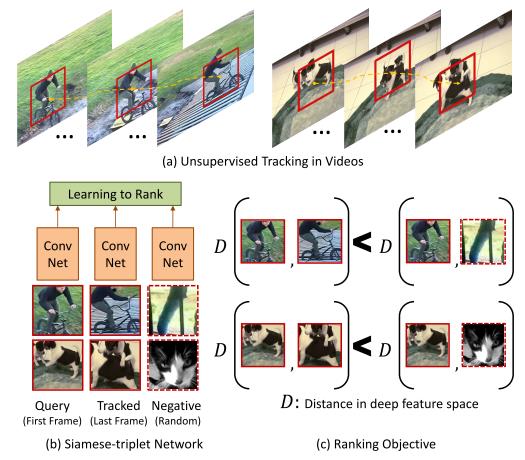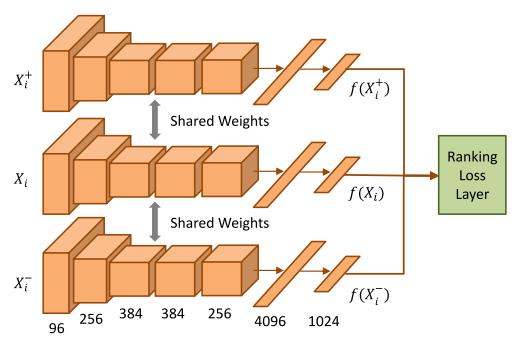CVICCV2015_Unsupervised Learning of Visual Representations using Videos
Posted
tags:
篇首语:本文由小常识网(cha138.com)小编为大家整理,主要介绍了CVICCV2015_Unsupervised Learning of Visual Representations using Videos相关的知识,希望对你有一定的参考价值。
Unsupervised Learning of Visual Representations using Videos
Motivation:
- Supervised learning is popular for CNN to train an excellent model on various visual problems, while the application of unsupervised learning leaves blank.
- People learn concepts quickly without numerous instances for training, and we learning things in a dynamic, mostly unsupervised environment.
- We’re short of labeled video data to do supervised learning, but we can easily access to tons of unlabeled data through Internet, which can be made use of by unsupervised learning.
Proposed Model:
Target: learning visual representations from videos in an unsupervised way
Key idea: tracking of moving object provides supervision
Brief introduction:
- Objective function (constraint): capture the first patch p1 of a moving object, keep tracking of it and get another patch p2 after several frames, then randomly select a negative patch p- from other places. The idea of objective function constrains the distance of p1 and p2 in feature space should be shorter than distance of p1 and p-



- Selection of tracking patch: using IDT to obtain SURF interest points to find out which part of the frame moves most. Setting threshold on the ratio of SURF interest points to avoid noise and camera motion.
- Tracking: using KCF tracker to track the patch
- Overrall pipline:
Feed triplet into three identical CNN, put two fully-connected layers on the top of pooling-5 layer to project into feature space, then computing the ranking loss to back-propagate the network. (note that: these three CNN shares parameters)

Training strategy:
There’re many empirical details to train a more powerful CNN in this work, however I’m not going to dive into it, only give some brief reviews on some the trick.
- Choose of negative samples:
- Random selection in the first 10 epochs of training
- Hard negative mining in later epochs, we search for all the possible negative patches and choose the top K patches which give maximum loss
* Intuition on the result:

See from the table above, [unsup + fp(3 ensemble)] outperforms other methods on the detection task of bus, car, person and train, but falls far behind on detecting bird, cat, dog and sofa, which may give us some intuitions.
以上是关于CVICCV2015_Unsupervised Learning of Visual Representations using Videos的主要内容,如果未能解决你的问题,请参考以下文章